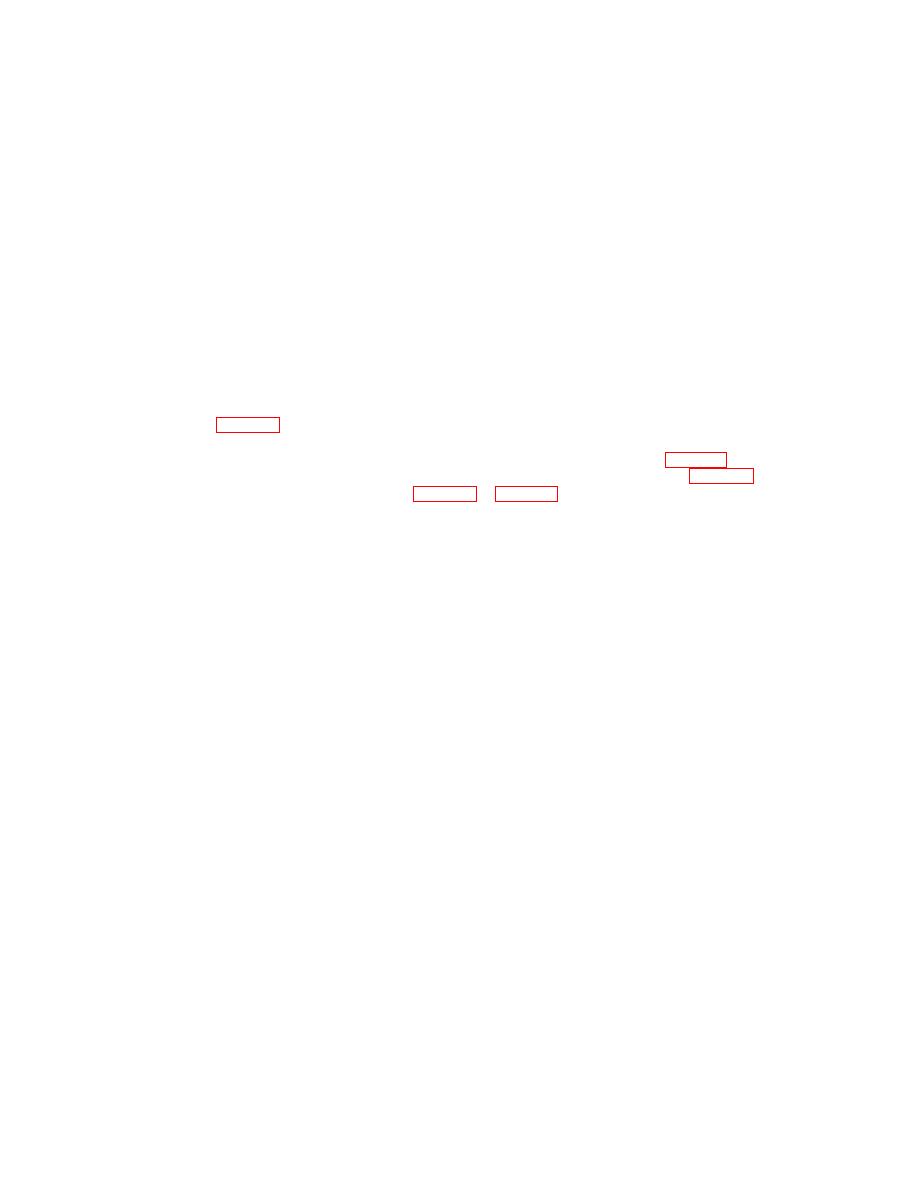
TM 9-4910-579-14&P
The device is now ready to be put in place, but before inserting it, first examine the bottom of the
cylinder bore to determine the best position on which to clamp. Whenever possible, we advise
setting the clamp crosswise of the cylinder block, but if ribs or sloping walls interfere, use the
nearest to a crosswise location which provides sufficient flat surface on which to hook the clamp
CAUTION
THE CLAMP MUST NEVER BE HOOKED LENGTHWISE OF THE BLOCK IF THE
CYLINDERS ARE SO CLOSE TOGETHER THAT ONE END OF THE CLAMP WOULD
PROJECT BEYOND THE WALL OF THE CYLINDER TO BE BORED. In other words,
the MOST IMPORTANT CAUTION to be observed in positioning the clamp is
NEVER ALLOW THE CLAMP TO PROJECT TO A POSITION WHERE THE BORING
TOOL COULD STRIKE IT. Second in importance is selecting as flat a place as
possible at the bottom of the cylinder on which to hook the clamp.
Now, tilt the clamp on its pivot pin until the anchor will enter the cylinder and rotate to such a
position as determined by examination described in the above two paragraphs. Then lower until
the upper tilted end can be hooked against one side wall and pull up until the clamp engages both
sides, as shown in Figure 4. Pull up on the clamp nut and shake the clamp back and forth to make
sure both shoulders (or adjusting screws) of the clamp are inside the cylinder. Continue to pull up
on the clamp nut and at the same time, adjust length until the U-shaped anchor gage (Figure 1) can
be slipped into place. Then, turn the clamp nut down almost tight against the gage. See Figure 4.
to be slid over it. Turning one of the centering screws slightly will lock the assembly in the cylinder.
Push the machine over the open end of the anchor gage first, as this allows removal of the gage
after the clamp nut engages the T-slot in the machine.
CAUTION IN CLAMPING
IN CLAMPING THE MACHINE TO THE BLOCK, ALWAYS USE THE SPECIAL WRENCH
FURNISHED FOR THIS PURPOSE. THE CLAMPING DEVICE INSIDE THE BASE OF THE
MACHINE HAS A POWERFUL LEVERAGE, AND ONLY A MEDIUM PULL ON THIS WRENCH IS
NECESSARY TO POSITIVELY CLAMP THE BAR. A HEAVY PULL ON THIS WRENCH WILL
CLAMP THE BAR TOO TIGHTLY AND CONSEQUENTLY DISTORT THE CYLINDER BLOCK,
RESULTING IN OUT-OF-ROUND HOLES AFTER THE MACHINE HAS BEEN UNCLAMPED.
OVER-CLAMPING WILL, ALSO, FORCE THE CLAMP NUT, FORMING DEPRESSIONS IN THE
T-SLOT OF THE ANCHOR CLAMP. THIS WILL EVENTUALLY CAUSE CENTERING TROUBLE
AS THE CLAMP NUT WILL SLIP INTO THE DEPRESSIONS WHILE CLAMPING, MOVING THE
MACHINE OFF CENTER AS FORCE IS APPLIED TO THE CLAMP.
-8-

